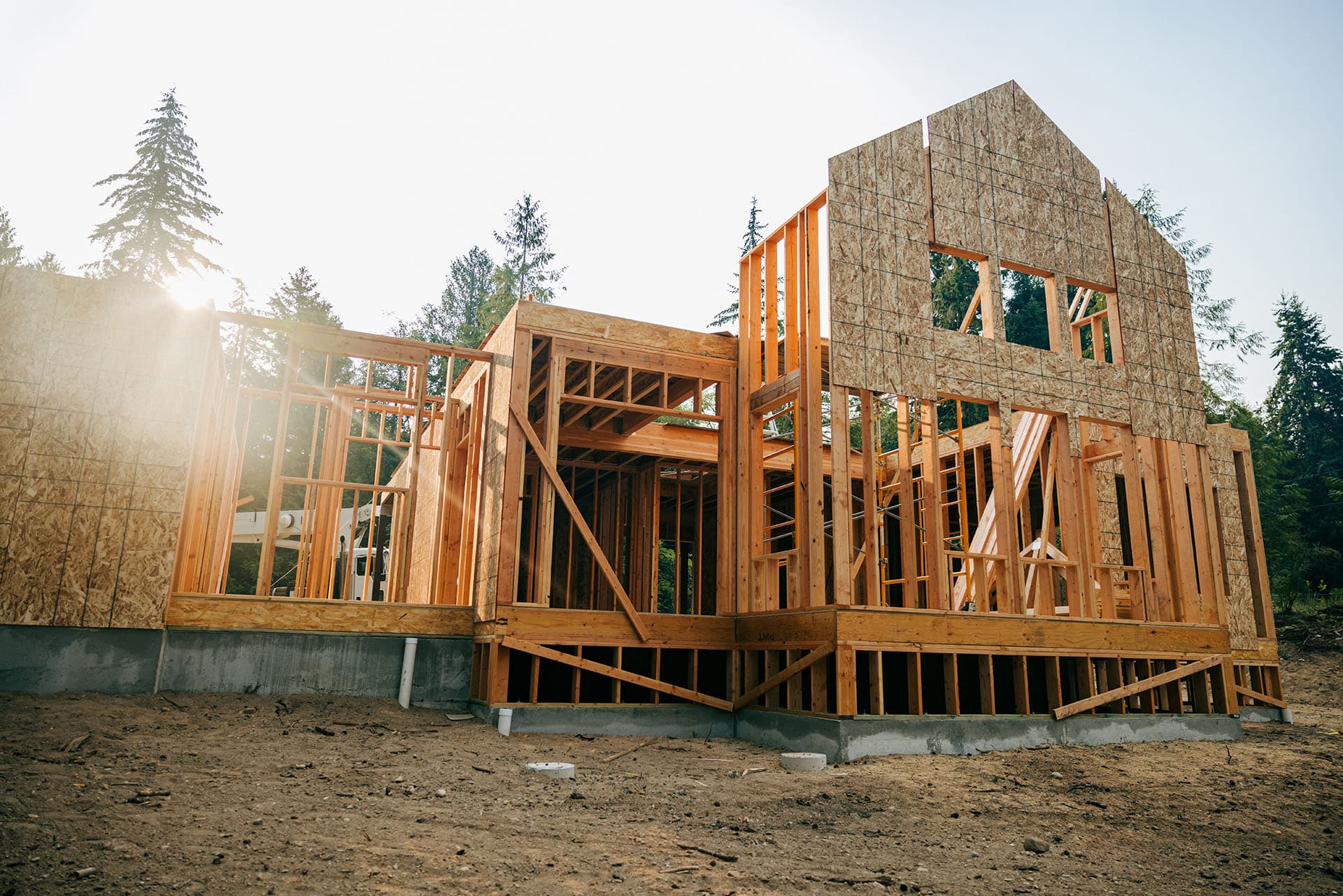Progressive Design-Build provides notable advantages for today’s complex infrastructure projects
The Progressive Design-Build (PDB) delivery model helps reduce and manage risks and deliver better outcomes for complex infrastructure projects.

Key highlights
Particularly well suited to today’s complex public-private partnership (P3) projects and complex infrastructure, the Progressive Design-Build (PDB) delivery model has become increasingly utilized to reduce and manage risks and deliver better outcomes
PDB is the application of Design-Build (DB) delivery via a collaborative, multi-phased, or progressive process
This method uses a primarily qualifications-based selection, followed by a process whereby the owner “progresses” toward a design and contract price with the team in an open book shared risk approach
For projects with the right fundamentals, PDB potentially offers several significant advantages over conventional DB construction, including financial risk mitigation and optimized scheduling, transparency, and a more collaborative environment
PDB is not a guarantee of a successful project, nor is it appropriate for every type of infrastructure initiative or all customers, thus the nature of the respective organization and the characteristics of each project and client organization should be evaluated to determine whether PDB is the best delivery method
Behavioral or organizational culture and behavior are major aspects to the success of the PDB approach
Public infrastructure projects are difficult, expensive to bid, and risky – Progressive Design-Build can help mitigate and better manage those risks
$2 billion. $5 billion. $10 billion.
Five years. Ten years. Twenty years.
The costs, time, and complexity involved in delivering the projects that need to upgrade and augment North America’s aging roads, bridges, water systems, transit systems, and other public infrastructure are increasing exponentially.
This is why we’re seeing more utilization of the Progressive Design-Build (PDB) delivery method. In the right circumstances, it can be particularly well suited to today’s complex Public-Private Partnership (P3) projects, this project delivery model has become increasingly utilized to reduce risks and maximize value. For their mega projects, contractors are increasingly unwilling to “wrap large risks” and provide fixed prices.
Consequently, as the ticket prices on public infrastructure projects become larger and delivery takes longer, the increased risk makes it challenging for governments to encourage private participation. PDB can help to mitigate those risks and encourage bidders.
An evolution in Design-Build
While variations of PDB have been used for years in Europe, the UK, and Australia, PDB rapidly gained ground in North America when the pandemic escalated construction costs, price, and schedule risks – particularly for complex and high-risk P3 infrastructure projects.
Today, the nature and size of these projects require a high degree of collaboration and agreement among public entity owners and the private consortiums of investors and operators involved in designing, building, financing, and operating a public infrastructure asset. PDB utilizes an approach where a team is assembled, and a project plan is developed through a collaborative and negotiated approach.
Here is what organizations charged with delivering complex infrastructure projects need to know about PDB, whether it may be suitable for projects you are considering, and how to ensure it delivers its notable advantages.
What is Progressive Design-Build?
PDB is the application of Design-Build (DB) delivery via a collaborative, multi-phased, or progressive process. This method uses a primarily qualifications-based selection, followed by a process whereby the owner “progresses” toward a design and contract price with the team. Owners defer finalizing price, schedule, and performance commitments until after the DB team has been selected and is under contract and the design and project risks have been sufficiently defined. This enhances the opportunity for collaboration, teamwork, and the likelihood of project success.
PDB begins by aligning expectations and developing shared goals of stakeholders before executing the work of design and construction, thus significantly reducing the potential for misaligned expectations for scope, cost, and schedule between the owner and Design-Builder, and also in execution.
Then, the parties collaboratively develop the project expectations and responsibilities as well as the terms of their relationship. This deep collaboration among all parties ensures the Design-Builder’s commitments and the final scope, schedule, and price are more reliable, making the project goals and outcomes more likely to be achieved and predictable.
Key characteristics of a PDB project
This is the most recent evolution of Design-Build that allows for the collaborative development of a project between a public owner and a private developer. It commonly features the following characteristics:
Two-phase procurement and delivery process: The first phase of PDB is design creation, and the second is construction. During phase one, the Design-Builder and the owner work closely together to define the project requirements, pricing, and risks and advance the design until it meets the owner’s needs. This initial phase includes periodic estimates as design details progress to specified points such as 30%, 60%, or 90%. This controls scope creep and reduces the potential for later disagreement on the guaranteed maximum price. Some early construction may begin during this phase. In the second phase, design continues to 100%, the parties agree on commercial terms (including price and timeline), contracts are finalized, and construction commences. To fast-track a contract, some owners establish an agreement that covers only the first phase of work with a Design-Builder. They will later negotiate another contract for phase two construction. Other owners prefer a contract that includes both phases of service to facilitate the execution of early work.
Qualifications focus: The procurement process focuses on qualifications and abilities rather than cost. Potential contractors are not required to submit final designs, costs, or schedules. Instead, they complete a Request for Qualifications (RFQ) that sets out the value they can provide.
Collaboration toward firm fixed price: PDB utilizes a development agreement, which is also called a pre-development agreement. This enables collaborative design and the advancement of a project to a point sufficient for the developer to provide a firm fixed price, or hard bid, to construct the project.
Open book costing: The agreement provides for a collaborative approach to construction cost estimating where the developer and owner share historic cost data, rates, and other information, and proceed through an iterative cost development process. Profit is a fixed fee or percentage on top of actual costs. Overages or cost savings are passed on to the owner. Ultimately, the hard bid presents no surprises for the owner.
Shared risk: There are many interfaces and complexities involved in large infrastructure projects. With PDB, contingency, pricing, and consequences are assessed and agreed on prior to establishing a contract with the Design-Builder. This enables the team to transfer and mitigate project risk more effectively.
Off-ramps: The development agreement features decision points where either the owner or the developer can elect not to proceed with the project prior to the submission of a hard bid.
Key advantages of a PDB project
For projects with the right fundamentals, PDB offers several significant advantages over conventional DB construction.
Financial risk mitigation
Early and extensive collaboration avoids surprises and problems later in a project. The owner is involved at the start of planning, and therefore able to provide input into significant decisions such as design, material and equipment selection, constructability, and sub-tier selection. The parties work as a team to develop the project’s scope, schedule, and budget.
Moreover, since the budget is developed incrementally throughout design, the guaranteed maximum price aligns with the owner’s budget. In some situations, the owner establishes a maximum cost at the start, and the Design-Builder is required to ensure the scope meets this target.
Optimized schedule
PDB procurement can provide a cost and schedule benefit to both the owner and contractors because certain early works can be undertaken during the development period. Advancing the environmental clearance process, right-of-way acquisition, utility relocations, and other potentially time-consuming activities extract project risks before the hard bid, preventing them from being priced in.
Estimating and scheduling transparency
Since PDB utilizes open book costing and scheduling, the Design-Builder provides full transparency into the estimating and scheduling process. This supports an environment of trust, enhances understanding of risks, and enables realistic pricing assumptions.
Safety net
Should the owner or Design-Builder fail to agree on terms during the development phase of an agreement, either party may exercise the off-ramp. This enables the owner to retain the rights to the design completed prior to termination, which they may use in another procurement for the project. The development partner may be reimbursed for costs incurred.
Given the growing price tags of these projects, terminating a non-viable deal before expending billions of dollars can be crucial.
When to consider PDB project delivery
There is a wide range of procurement options for delivering infrastructure projects. To determine the best solution, each alternative should be carefully evaluated. That said, certain attributes lend themselves to PDB delivery, including the following:
The owner is experienced in alternative project delivery.
The project is large, involving multiple stakeholders and a complex scope of work.
Examples include transit, highways, bridges, flood control projects, wastewater treatment plants, desalinization plants, and power infrastructure.
The availability payment mechanism is a better fit than demand risk.
Expedited completion would be a significant benefit for the project, especially if it is one that would significantly disrupt residents and businesses.
There is a need for innovative solutions related to alternative technical concepts and unique approaches to design and construction.
Right-of-way requirements, utility coordination and/or railroad impacts are minimal or can be completed without significant delay.
The funding mix includes private financing.
The agreement would include transferring obligations for operations and maintenance to a private partner.
What’s needed to successfully move PDB projects forward
Even when a public agency owner has experience with PDB, procurement and delivery require more time, specialized expertise, information, data, and measurement than traditional DB approaches. To move forward with a PDB project, the following fundamentals must be accounted for:
Experienced advisors
Once the business case for a project is completed, consultants experienced with PDB can assist the agency owner in objectively evaluating the appropriateness of a project for PDB and conduct a value-for-money assessment. As well, they can assist in determining whether the owner has the necessary expertise, internal resources, and culture to effectively manage this undertaking.
Through the duration of a project, these advisors can also serve as a continuing resource, providing support where an owner does not have the in-house skills or capacity. This may include risk identification, project due diligence, authority approvals, developing technical requirements, contract development, and reviews of contracts and cost estimates.
Project charter
A project charter is the axis of every PDB project. This serves as a guide encompassing project purpose, vision, scope, goals, roles, responsibilities, timeline, budget, and other relevant information. Supporting collaboration, ownership, and accountability, the project charter is key to maintaining team collaboration and alignment toward shared goals.
Want to be notified of our new and relevant CRE content, articles and events?
Author

Paul Hughes
Senior Director
Author

Paul Hughes
Senior Director
Resources
Latest insights






